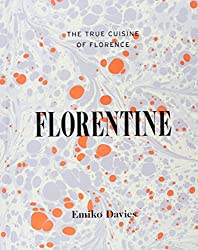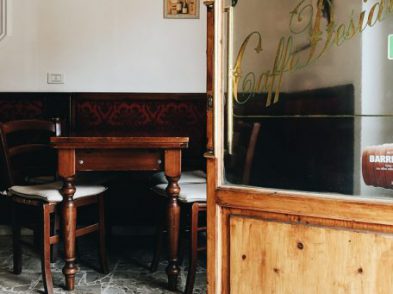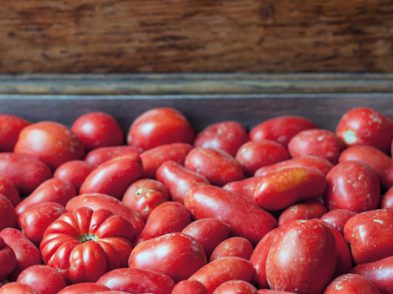The Florentine gastronome Caterina de’ Medici is well known to have inspired and influenced French cuisine. Some say her arrival in Paris was even the turning point. Her entourage of Florentine chefs and cooks that she insisted on bringing from home and her love of familiar food (still something that you cannot take away from any proud Florentine) introduced her French court to, among others, the beauties of sorbet and gelato, chicken and goose liver, crepes, and even forks and table manners.
One story maintains that Caterina de’ Medici may have inspired the beloved pot-au-feu, a dish that Michelin chef Raymond Blanc says is ‘the quintessence of French family cuisine’ and ‘the most celebrated dish in France,’ honouring the tables of the wealthy and the poor alike.
It seems a stretch, but taking a closer look at what is at the heart of pot-au-feu, there is no denying its similarity to Italian minestra, bollito and brodo.
Pot-au-feu (‘pot on the fire’) is a dish of meat and marrow bones boiled with herbs and coarsely chopped root vegetables, such as carrot, onion or leek, and turnips. It is the base of any good homemade brodo or beef stock. Pot-au-feu can be served in several ways, from rustic to elegant. With plenty of vegetables, it is much like an Italian minestra. Serve the falling-apart chunks of meat separate from the liquid, accompanied by some hot mustard and it is bollito. The broth can also be used as a base for other soups and sauce, as brodo is.
Indeed, brodo is the very first of over 700 recipes in Pellegrino Artusi’s 1891 Science in the Kitchen and the Art of Eating Well (see TF 58). It describes a dish nearly identical to pot-au-feu in both preparation and use. For example, Artusi mentions the importance of using an earthenware pot rather than one of cast iron (in the days when the pot would have been sitting over a fire, this is sound advice: earthenware gives more control over the heat). He points out that for a good bollito-that is, as in the pot-au-feu, the meat is served as a separate dish-one should begin with boiling water, but for good brodo, use cold water.
To turn the brodo into a minestra, which according to Sharon Herbst’s reference guide The Food Lover’s Companion, is a soup of ‘medium-thickness’ with meat and vegetables in a broth, simply use the brodo as a base, adding more chopped seasonal vegetables. To make it minestrone, the -one implying something ‘bigger,’ add beans or pasta-or both.
The Italian saying antico quanto il brodetto (‘as ancient as broth’) means ‘very old indeed.’ Although ancient, the approach Caterina’s chefs used for brodo apparently spurred a change in the way meals were served in France: in a succession of courses, rather than all at once. However, it was another heavyweight gastronome, Henry IV, Caterina’s son-in-law, who helped bring Caterina’s dish to the tables of every French family.
Henry IV, who married Caterina’s daughter Margaret (and later, obviously with a taste for Medici women, wed Maria de’ Medici, daughter of Francesco I de’ Medici), was enamoured of Caterina’s pot-au-feu. It was his favourite dish, and he was even known to exclaim that every peasant family in the land should have a pot of this bubbling away on its hearth every Sunday.
The thing to love about this ultimate comfort-food dish is the act of ladling the steaming minestrone/ pot-au-feu out of a large earthenware pot into your family’s soup bowls. It’s a homely ritual usually performed by the head of the household. Italians have a wonderful word for this verb, too: minestrare.
RECIPE
Brodo, minestra, minestrone Serves 6
Begin with a good homemade beef stock (the ingredients below should make about 2 litres of broth); this one is based roughly on Pellegrino Artusi’s description. Note that if the chuck steak is to be served as part of the dish, use boiling water rather than cold. Serve any of these variations with a piece of toasted bread in the bottom of the bowl or on the side, and grated Parmesan cheese and chopped parsley on top.
INGREDIENTS
For the brodo:
1 kilo of beef bones and chuck steak
A bouquet garni of herbs, such as fresh bay leaf and parsley
1 stalk of celery
1 large carrot
1 brown onion
For the minestra/minestrone:
Roughly chopped seasonal vegetables (see suggestions below)
A tin of borlotti beans
50 grams of pasta, rice or barley
Grated Parmesan cheese
Parsley, chopped for garnish
Toasted slices of bread for each bowl
PREPARATION
For the brodo:
Place the brodo ingredients (whole or chopped in half to fit) in a large pot with a lid and cover with cold water (boiling if you are making bollito). Bring slowly to the boil, and when you first see some foam appearing, remove it with a slotted spoon; then cover the pan and let the brodo simmer slowly for up to three hours.
Add a pinch of salt if you like, but consider also leaving out salt and seasoning later according to how you will use the brodo.
If you are using the chuck steak for bollito, remove it when it is tender and set it aside for serving. Remove the vegetables and herbs and strain. (If you have time, let the pot cool and remove the solidified layer of fat from the surface of the stock.)
For the minestra or minestrone:
To turn the brodo into a minestra, remove and strain the solids, and, returning the liquid to the pan, bring to the boil and add the chopped fresh vegetables in season. Spring provides the choice of lovely freshly shelled peas, broad beans, string beans and young carrots. Cook them lightly so they are still bright and have a slight bite to them. You can even shred the meat and add it, too.
For the heartier minestrone, add cooked and drained borlotti beans to the pot and some small-shaped pasta, rice or barley.
Read more from Emiko Davies’ cookbook Florentine: The True Cuisine of Florence, published by Hardie Grant Books. Order your copy of Florentine: The True Cuisine of Florence here.









